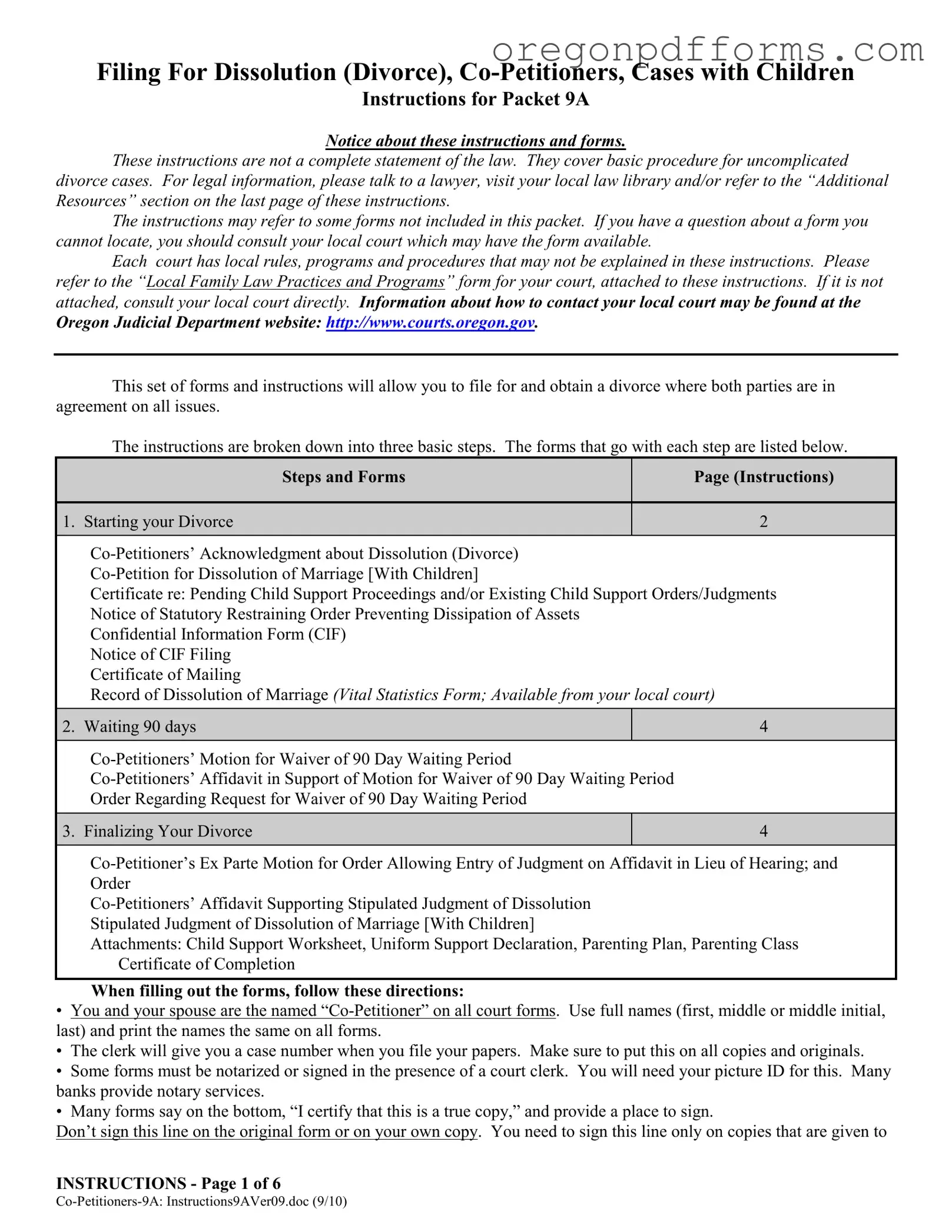In Oregon, the process of obtaining a divorce is guided by a specific set of forms known as the Divorce Papers Oregon form. This collection is designed for couples who are in agreement on all matters related to their separation, simplifying the path to dissolution. The forms are organized into three main steps: starting the divorce, waiting a mandatory 90 days, and finalizing the divorce. Initially, couples must complete and file several key documents, including the Co-Petitioners’ Acknowledgment about Dissolution and the Co-Petition for Dissolution of Marriage. These forms require full names and accurate details to ensure proper processing. For cases involving children, additional forms related to child support and parenting plans are essential. The instructions emphasize the importance of addressing various legal issues, such as spousal support, property division, and health insurance for minor children. Furthermore, a statutory restraining order is automatically imposed to protect both parties from dissipating assets during the divorce proceedings. After filing, a 90-day waiting period is mandated, allowing both parties to reconsider their decisions. Finally, the divorce is finalized through the submission of stipulated judgments and any necessary supporting documents, ensuring that all aspects of the divorce are legally recognized and enforceable. Each step is clearly outlined, but it is crucial to consult local court rules and seek legal advice when needed to navigate this complex process effectively.
